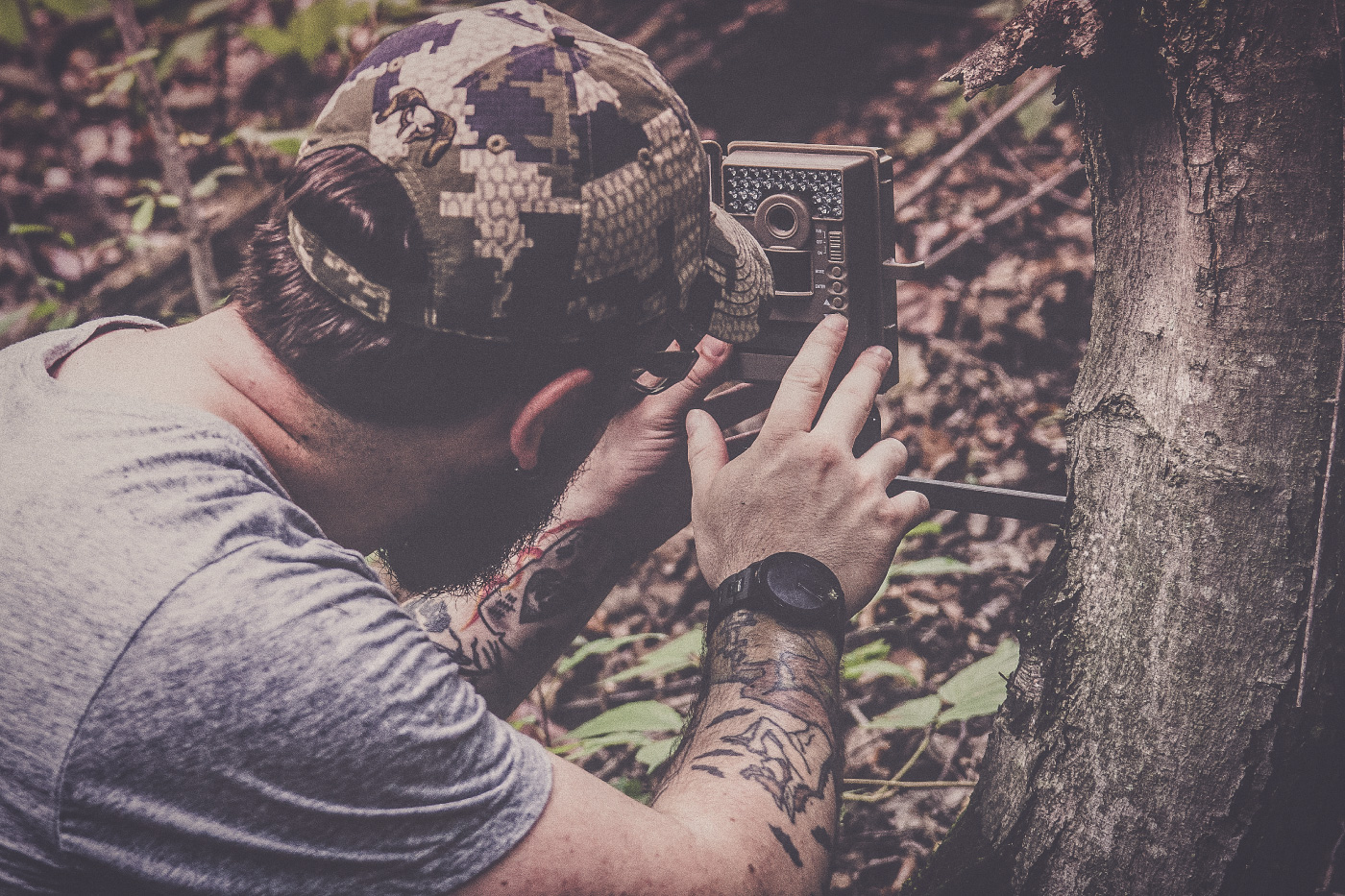Home » News » The Science of Fear: Fluid Motion
The Science of Fear: Fluid Motion

A.J. DeRosa founded Project Upland in 2014 as an excuse…
“Establishing and controlling alert distances is one of the most effective skills of the ‘Modern Still Hunter.” — The Urban Deer Complex
The theory of fluid motion is an urban deer hunting concept built on maintaining a presence with a whitetail deer long enough to make a successful shot. It is an adaptation of one of the oldest traditional hunting techniques — still hunting. With a major shift in whitetail behavior in suburban America, the ability to use urban camouflage has become far more effective than classical tactics.
Still hunting is a developed skill that requires patience, endurance and focus. As we push forward into the 21st century, it has become a dying art for whitetail hunters.
Like all things, we as hunters have evolved. As evolving predators, many urban and suburban hunters have stumbled upon a unique urban deer behavior. That specific behavior is the change in alert distances when compared to rural whitetails. This change in behavior has sparked an adaptation of modern still hunting.
Where the traditional still hunter takes a few steps and stops, the urban still hunter maintains fluid motion.
Alert Distance is the instance where a whitetail becomes alerted to human presence. When they begin to flee, whitetails have shown their flight distance. We find that deer in suburban and urban America are more tolerable of human contact because, put plainly, they don’t have much of a choice.
Even though deer are more apt to allow humans to come closer in urban environments, it does not mean we can casually walk up to them. There is still a very specific set of human behaviors which deer are looking for to determine what is safe and what is not.
The first of those requirements is that whitetails will only tolerate human activity where they have come to expect it. These are the places where people walk or rides on trails or anywhere else human traffic is commonplace. Whitetail deer will observe humans on these trails from much closer distances than rural whitetails would ever consider. Once we step off trails and enter the non-human walking areas, however, deer quickly switch from alert to flight.
The second behavior that deer come to expect is fluid motion.
This is the fundamental basis of the theory of fluid motion deer hunting technique. The average non-hunter will never notice a deer standing or bedded 20 yards off the trail. They are dozens of reasons why non-hunters are generally less keen on spotting deer. At times, even blissfully unaware of their presence.
Deer that have developed complex ideas of human behavior will maintain this alert distance as long as the human does not stop moving. In most cases, a sudden stop in fluid motion will cause the deer to activate the flight response.
In the hunting theory of fluid motion, a hunter must maintain constant movement when a deer is spotted off a trail. Learning how to walk while drawing our bows and making ethical shots is something we should practice. Hunters must also must understand that often we can pass by the deer many times before it take’s flight.
Don’t be afraid to walk completely past a deer, turn around, and then walk back by the deer prepared to draw and shoot.
I have killed many deer with this method over the years. I have successfully used such techniques as walking backwards past deer. On other occasions walking small loops to pass by for a better chance. The trick is to do whatever else deer have come to associate with safe human behavior.
Although I will not say that classic still hunting does not work in suburban America, the rules are certainly different. The availability of walking trails and this unique adapted behavior make this technique much more effective. Whitetails can distinguish very specific different behaviors in humans, making the still hunter (off trails) an obvious threat.
A.J. DeRosa founded Project Upland in 2014 as an excuse to go hunting more often (and it worked). A New England native, he grew up hunting and has spent over 30 years in pursuit of big and small game species across three continents. He started collecting guns on his 18th birthday and eventually found his passion for side-by-side shotguns, inspiring him to travel the world to meet the people and places from which they come. Looking to turn his passion into inspiration for others, AJ was first published in 2004 and went on to write his first book The Urban Deer Complex in 2014. He soon discovered a love for filmmaking, particularly the challenge of capturing ruffed grouse with a camera, which led to the award-winning Project Upland film series. AJ's love for all things wild has caused him to advocate on the federal and state levels to promote and expand conservation policy, habitat funding, and upland game bird awareness. He currently serves as the Strafford County New Hampshire Fish & Game Commissioner in order to give back to his community and to further the mission of the agency. When those hunting excuses are in play, you can find him wandering behind his Wirehaired Pointing Griffon in the mountains of New England and anywhere else the birds take them.




I have been using non threatening/non predatory behavior to deceive deer for years now. Early in my bowhunting career I learned this lesson as i was heading into one of my stands. I used to sneak in and out of my stands very carefully. Crouched, slow, silent movements…very predatory in appearance. One day as I was sneaking in, i rounded the corner of a finger of brush protruding from a thicket into open hard woods when I heard a deer stomp, snort and bolt. this deer saw me sneaking and immediately recognized my movement as predatory. it wasn’t until a few days later that I noticed a deer watching me walk casually down a trail on the same property…I saw the deer from a ways off but i never broke stride or even acknowledged the deer’s presence by looking directly at it. this deer let me pass within 15 yds. As i got down the trail a ways i stopped and turned around to watch this deer step out of the woods and cross the trail with zero regard for my crossing just a few moments before. Deer are particularly adept at perceiving predatory/threatening behavior.
I read this article a few weeks ago. And thanks to what I read here. I was able to harvest my first suburban deer in 14 years. Try it it works.
Some of the closest, most intimate encounters I’ve had with deer have been with animals that I’ve decided not to kill, or ones that occurred outside of hunting season. These encounters, whether in or out of hunting season, were made possible by my ability to instantly behave in a non-threatening way. I’ve found that dropping to the ground “on all fours”, not looking directly at the animal and even mimicking “herbivore behavior” has a very calming effect on deer. Once I spent about 15 minutes in the corner of a greenfield with a 2-1/2 year old 4 pt buck who must’ve thought I was the weirdest looking deer he’d ever seen. He browsed, groomed himself and inspected me from as close at 5 yards before losing interest and moving on.